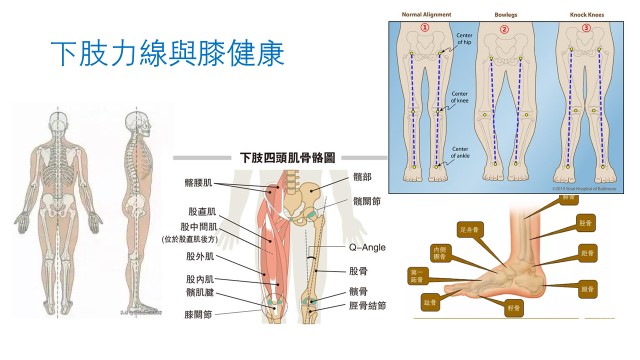人才・聚
自1956年成立以來,浸大已培育了逾140,000位畢業生,當中許多校友在各個領域都取得了顯著成就。我們期望讓校友擴闊知識領域,因此發掘來自不同專業領域的校友,並邀請他們分享有關方面的知識。
張振海校友從中醫角度分享有關膝關節痛的知識

校友張振海醫師
校友張振海醫師 (中醫) 現於香港浸會大學中醫藥學院臨床部出任中醫臨床助理教授。張醫師於香港浸會大學取得中醫學學士、生物醫學 (榮譽) 理學士,以及中醫學碩士 (骨傷推拿方向) (優良) 學位。張醫師畢業後一直留校致力從事骨傷臨床科學的研究,推動骨傷推拿臨床教學及臨床工作。
張醫師亦獲推選擔任多項社會職務,致力推動中醫在香港及國際發展。他現為香港註冊中醫學會秘書長、慈善基金副秘書長,於2017年至今獲委任香港中醫專科發展委員會骨傷科委員。於2019年至今獲委任為食物及衛生局香港中醫中藥發展委員會中藥業小組委員,於2021年至今獲委任為衛生署香港中醫藥管理委員會註冊事務小組委員。
(訪問內容只供英文版本)
1. Knee pain is a common health problem encountered by Hong Kong people nowadays. What are the major causes?
Knee pain is one of the common pain-causing diseases and it affects patients’ mobility which in turn seriously affects the quality of patients’ life. The most common cause of knee pain is due to inflammation occurring at the patello-femoral joint of the anterior knee. It is now commonly recognised as Patello-femoral pain syndrome (PFPS), and is categorised as anterior knee pain.
The pathogenesis of PFPS
- Congenital factors: Congenital structural deformities, including deformities at the patellar bone and femoral groove, the ligaments around the patellar bone, and the patellar tendon.
- Injury factors: Over-use of knee joints, strain on lower extremity muscles and Quadriceps muscle imbalance. PFPS is common among sportsmen.
- Degenerative factors: Due to aging, the regeneration rate of both bones and joints is reduced. while at the time damaging the cartilages around and thus causing inflammation.
2. How to diagnose knee pain through clinical inspection?
Clinical features
- Latent knee pain, or the gradual increase of which can also be sustained by a sudden sprain.
- The most common symptoms include diffuse peripatellar pain (vague pain around the kneecap) and localised retropatellar pain (pain localised behind the kneecap). Affected individuals typically have difficulty describing the location of the pain, and may place their hands over the anterior patella or describe the pain area as a circle around the patella (the “circle sign”). Pain is usually initiated when the knee extensor mechanism is sustaining an increasing loading, e.g., ascending or descending stairs or slopes, squatting, kneeling etc. Such pain, however, does not occur when walking on a flat road, and there is no obvious obstacle to the knee joint function. The pain is typically aching, with occasional sharp pains. Standing up after prolonged sitting with flexed (bent) knees usually initiates the pain.
- Physical examinations: Pain surrounding the patellar bone; Patellofemoral grinding test (+); Presence of crepitus; Movement limitation in knee joints during bending and extension in final stage.
- X-ray examinations: The posterior edge of the patellar bone will be found unsmooth (lateral view and skyline view of the knee joint); osteophytes (骨刺) will be found at the upper and/or lower edge of the patellar bone.
3. What treatment does Chinese Medicine provide for knee pain? What is the theory behind?
Traditional Chinese Medicine (TCM)
Knee pain is classified as “Bi Zheng (痹證)”. Its causes are related to qi-deficiency (氣虛), external wind and dampness invasion and external injury etc. These result in qi and blood stasis, or sputum or dampness inside the muscle and knee joint which finally cause the knee pain.
- Medications: TCM herbal medicine for internal or external use.
- Acupuncture
- Tui-na manipulations
The treatment in TCM is shown as below.

Treatment Theory hypothesis under observation
Besides attending to the local pain symptoms around the knee joints, we also need to consider the mechanical lines of a patient, so as to keep his knees healthy in the long run. The components of the mechanical line for the lower extremities include the low back region, the thighs, the calf muscles and the ankles. We need to ensure the smoothness of these mechanical lines so as to maintain the stability of the knee joints to allow them to function properly.

4. Please share some daily tips for preventing knee pain.
Daily prevention
TCM would suggest that acute point self-manipulations could help. Suggested acute points include Heding(鶴頂)、Liangqiu (梁丘)、Xuehai (血海)、Xiyan (膝眼)、Yinlingquan (陰陵泉) and Yanglingquan(陽陵泉). This can help relieve the pain symptoms by regulating the Qi and Blood circulations in the internal channels nearby.

TCM would not suggest the compression of the patella and the scrubbing of the affected knee joint(s) frequently, which are mostly done by people suffering from knee pain, because such actions will simply add pressure to the knee(s) and damage the patella-femoral surface. Patients are not advised to walk more than 10,000 steps per day in case they do not possess a smooth mechanical line in the lower extremities, since it may hurt their knee or heel instead.
Squatting, a kind of fitness exercise, is also considered a means to help maintain knee health. The quadriceps, our anterior thigh muscle, is our focus to be strengthened. Since the quadriceps cover our patella, the stronger the quadriceps the better they can help maintain the stability of our knee.
Research experience
We are currently recruiting participants in our joint clinical pilot study which aims at comparing the efficacy of Acupuncture and Physiotherapy in the treatment of PFPS. If you are interested, please contact our staff team at HKBU School of Chinese Medicine for further details.
Contact: (852) 3411 2986




